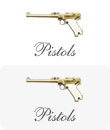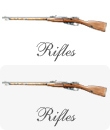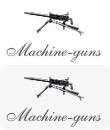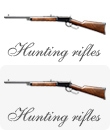 |  |  |  |  |
Collecting
Collecting full-action models of small arms is a widespread centuries-long passion.
Collecting miniature weapons of the past which reproduce those manufactured by the world’s renowned weapon companies is today not only an interesting and respectful but also prestigious occupation.
One of the earliest miniatures — a wheel lock musket — appeared in England as early as in XV century.
The European tradition of miniature weapon manufacture was part of the training process of skilled gun-makers. An apprentice was supposed to produce a scaled-down model in order to be recognized as an accomplished craftsman and demonstrate impeccable quality of his work.
In Russia, one of the earliest mentions of these weapons dates back to 1810 when Prince Dolgorukov was offered a pair of flintlock pistols weighing only 13 grams each during his visit to Tula.
A while ago, graduates of the Mikhailovskoye Artillery Academy were obliged to produce a miniature full-action model of a firearm on completion of studies. Now these miniature weapons displayed in museums of Saint-Petersburg strike visitors not only because they are so true to the original but by also by their amazing decorations.
A tradition to make gifts of miniature weapons to persons of royal dignity existed in Russia for many years. A set of three 1/4 scale full-action Mosin rifles presented to Emperor Nicholas II in March of 1897 by gun-makers of the Izhevsk Armory on occasion of the manufacture of the first 500,000 thousand of these weapons is displayed in the Hermitage, with a golden royal monogram reproduced on the cartridge-chamber of each model. In 1900, four similar miniatures were displayed at the International Exhibition in Paris. A model of the Mosin dragoon rifle of 1891 displayed in the Central Museum of the Armed Forces in Moscow and donated by V.P. Bogomazov, a Civil War veteran, in 1963 dates back to imperial Russia. Unfortunately, it is unknown who made this model or at what armory is was made.
Another tradition was widespread at the Obukhov and Putilov Armories of Saint-Petersburg which produced artillery pieces for the Russian army and navy: when the gun-makers moved on to a new model, they would make exact small-size copies to be given away to persons of royal dignity and eminent visitors.
This tradition only became stronger during the Soviet time, with the earliest miniature models being dedicated to V.I. Lenin. In autumn of 1918, gun-makers of the
Izhevsk Armory presented to Lenin a miniature Mosin rifle weighing 64 times less than the original to commemorate a glorious victory of the Red Army,
with the following dedicatory inscription on the rifle case: "To comrade Lenin, a great leader of the proletariat, from the 2nd steel division and the
Revolutionary Council of the city of Izhevsk in memory of the taking of Izhevsk, November 7, 1918.
It was not only already known miniatures but also new items that became a focus of interest. This was prompted by an event involving S.M. Budenny which took
place in 1927. While in Tula, he attempted to operate miniature models of the Lefaucher pin revolver made at the Tula Armory School
in
Apart from miniature copies of combat arms, a number of copies of hunting rifles were also made in the Soviet time. In 1959, for example, A.I. Dygern
and N.V. Vasin, gun-makers from Tula, made a small full-action harpoon rifle. Colonel Y.V. Khrunov, one of the first Soviet astronauts, made several shots from this model ten years
after.
Thus, apart from a purely aesthetic value of miniature weapons, a collection of these models will have a practical value of tracing back the evolution history of small arms and demonstrating the changing way of their production and decoration.






